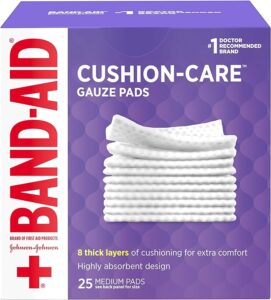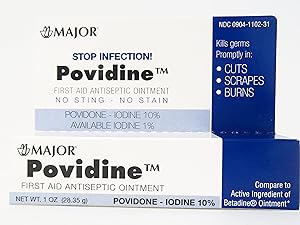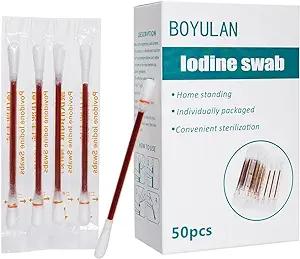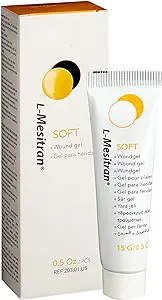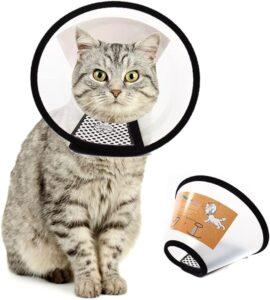What does a wound on your cat's lip look like?
You can recognize a wound on your cat’s lip because a small piece of his lip no longer contains hair and the skin in that area is open. The skin can be completely broken down to the underlying tissues. In this case you usually see the jawbone or the subcutaneous connective tissue. In other words, you see a red or whiteish tissue through the hole in the skin. But if the skin is not yet completely through, then it is more of a scrape. It can therefore be a wound in which a piece of skin has been rubbed away or a wound in which the skin contains a cut.
A wound on your cat’s lip develops from one moment to the next. So if you have seen that the wound slowly developed and got bigger, then there is probably something else going on. For example, it can be an eosionophilic granuloma complex or an abscess when it slowly gets worse.
When should you see your vet with a wound on your cat's lip?
It’s always best to see your vet if you see a wound on your cat’s lip. However, if the wound is smaller than half a centimeter and if the sides of the wound are nicely laying against each other, you can also treat it at home and keep a close eye on it. Apart from the wounds, your cat should not have any other complaints. He must therefore be able and willing to eat well and he must not walk with a limp or appear to be in pain. His lip also is not supposed to swell up.
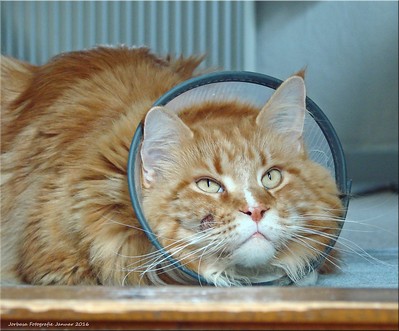
How do you treat a wound on your cat's lip yourself?
For all forms of wounds, you must first clean them, then disinfect them and then stimulate wound healing. This is further explained below.
Keep calm
A cat that just had an accident is most likely very frightened. If you, as the owner, start running around your cat like a panicking maniac, your cat will not cooperate with the wound treatment. So make sure your cat calms down first. If the wound on your cat’s lip is bleeding, the wound will also be rinsed clean by the blood. As long as the blood does not come out in large puddles at the same time, it is not a problem if you let it bleed for a while without doing anything about it. Usually the bleeding will stop on its own after about 5 minutes. Once you, the owner, and your cat have both calmed down, you can begin treatment.
Cleaning the wound
You start by first washing your hands well with soap. You then clean the wound on your cat’s lip with some water and a gauze compress. If your area has clean tap-water you just can use normal tap-water. But if the water from the tap isn’t of high quality, then it is best to take water that has boiled for 10 minutes.
This step is mainly about removing dirt such as sand, hair and, for example, pieces of grass from the wound on your cat’s lip. While cleaning the wound, you also look closely at how deep the wound is on his lip and whether there is no object left behind. Very often an owner finds a nail of the other cat if the wound is caused by a fight. It may also be wise to shave or trim hair around the wound if your cat is a long-haired cat. Then the hairs will not stick in the wound. You can also trim the whiskers without hurting your cat. Take a picture of the wound at this time. If the wound later is healing (or not healing), you can compare the healing wound with the photo you have of this moment.
Disinfect
Disinfecting the wound on your cat’s lip is all about destroying any bacteria and viruses. This greatly reduces the chance of a wound infection. There is also a chance of getting the tetanus bacteria in wounds. If your cat has gotten the bacteria Clostridium tetani in his wound, than this bacteria will make toxins that makes your cat ill. Your cat’s body will go into a spasm and there is a chance that he will die. Disinfecting the wound makes the chance of a normal bacterial infection and a tetanus infection much smaller.
You disinfect wounds using betadine solution or betadine ointment. The latter is preferred because it is easier to apply to your cat than the solution, but both disinfect equally well. You apply the ointment with your finger. It is best to put the solution on a cotton swab or gauze pad and use it to dab the wound on your cat’s lip. In both cases there should be an ocher yellow color, but not too thick of a layer of ointment. Cats can develop diarrhea if they ingest too much betadine. As long as the wound gets a bit of an ocher color, it’s good, thicker is not necessary.
Stimulate wound healing
Good, the wound has now been cleaned and the bacteria and viruses present have been killed. Now the wound on your cat’s lip should begin to heal. Your cat’s body can do this on its own, but it goes faster when you use a wound ointment. This also counteracts the formation of bacteria in the days after disinfection. After all, your cat’s tongue and the air also contain bacteria that can still infect the wound.
We usually use honey ointment to promote wound healing and to prevent bacterial growth. Honey contains a lot of sugar that bacteria hate and honey also provides a layer of hydrogen peroxide caused by some enzymes at the level of tissue that prevents bacterial growth. In addition, honey has a wound healing stimulating effect.
Honey ointment should be applied to the wound on your cat’s lip 2-3 times a day. Usually 5-7 days is enough. At that point, the wound should look almost healed.
Extra protection of the wound
Cats can sometimes be very itchy or suffer from their wound. Especially in the days of healing. This causes them to scratch the wound on the lip excessively. If this is the case with your cat, it is best to put a medical collar on him. Please note that it must be quite long. A hind leg can sometimes be quite flexible when it comes to a wound on your cat’s lip.
What if the wound isn't healing properly?
In that case, there is probably still an object in the wound on his lip or a bacterial wound infection has occurred. As a result, the wound cannot heal properly and may even fester. Or it is just simply not a wound but some other skin leasion. In this case, you should take your cat to your vet. He can see if it is necessary to clean the wound on your cat’s lip under anesthesia. But in most cases, a course of antibiotics is sufficient.
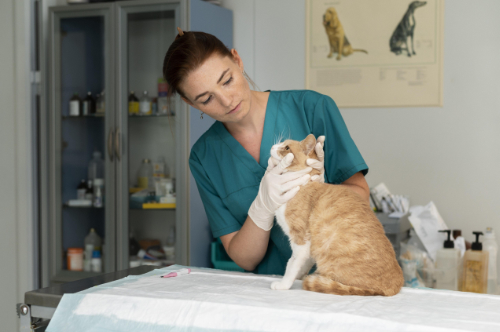
Good luck! And get well soon for your cat.

